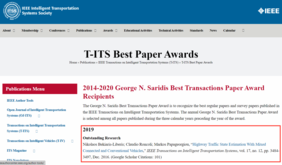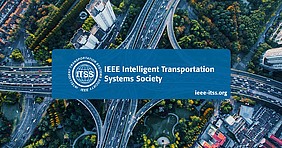Assistant Professor Nikolaos Bekiaris-Liberis of the School of Electrical and Computer Engineering and Professor Emeritus Markos Papageorgiou of the School of Production Engineering and Management at the Technical University of Crete, along with their co-author Claudio Roncoli, were awarded the distinction of "Outstanding Research 2019" for their research paper titled "Highway Traffic State Estimation With Mixed Connected and Conventional Vehicles" (IEEE Transactions on Intelligent Transportation Systems, vol. 17, no. 12, pp. 3484-3497, Dec. 2016). This distinction was part of the George N. Saridis Best Transactions Paper Awards that recognize the best regular papers and survey papers published in the IEEE Transactions on Intelligent Transportation Systems journal. The annual George N. Saridis Best Transactions Paper Award is selected among all papers published during the three calendar years preceding the year of the award.
This particular research paper presents a macroscopic model-based approach for the estimation of the total density and flow of vehicles, for the case of "mixed" traffic, i.e., traffic comprising both ordinary and connected vehicles, utilizing only average speed measurements reported by connected vehicles and a minimum number (sufficient to guarantee observability) of spot-sensor-based total flow measurements. The approach is based on the realistic and validated assumption that the average speed of conventional vehicles is roughly equal to the average speed of connected vehicles, and consequently, it can be obtained at the (local or central) traffic monitoring and control unit from connected vehicles' reports. Thus, complete traffic state estimation (for arbitrarily selected segments in the network) may be achieved by estimating the total density of vehicles.






